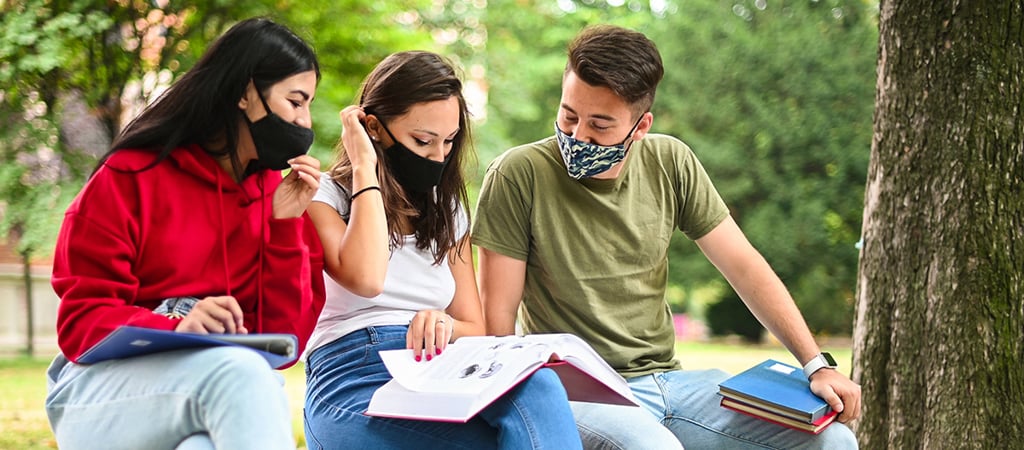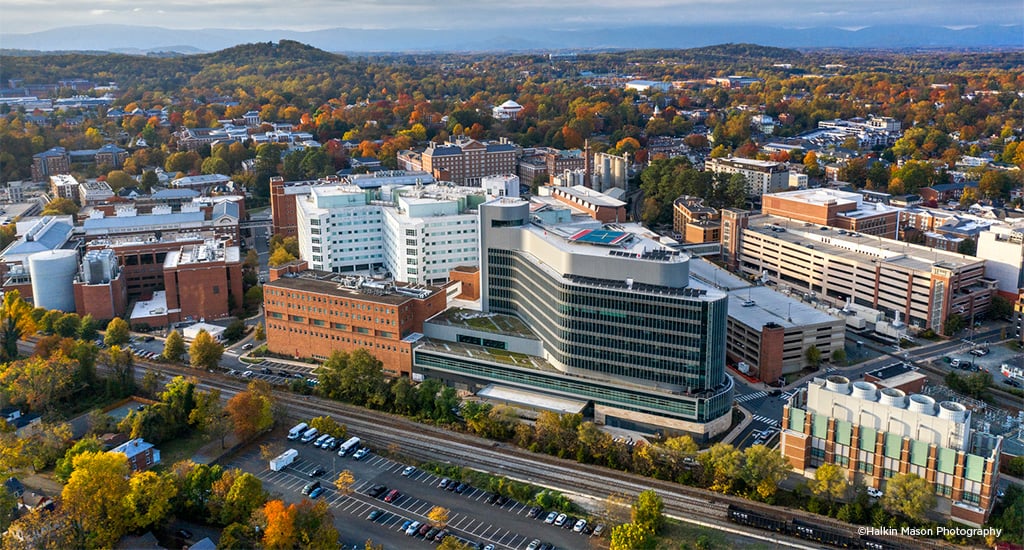Over the past few months, universities across the country have reopened, welcoming students and faculty back to campus. While changes have been required to address COVID-19 safety concerns, higher education institutions are finding solutions, adapting to the evolving pandemic, and proving it is possible to move forward during this time.
Each campus is unique and administrators are making decisions based on their specific needs. Many have looked at alternative uses for existing indoor and outdoor spaces to further reduce density in classrooms and public spaces, or modifications to existing pedestrian, parking, and transportation systems that can minimize unnecessary interactions and improve overall mobility.
Funding these changes may also require a fresh perspective. In addition to decreased enrollment raising concerns around tuition revenue, the pandemic has impacted other major revenue drivers at some of these institutions, including parking, housing, dining, and athletic programs.
As the 2020/2021 academic year moves forward, universities are considering the following questions:
- Will COVID-19 surge in the colder months?
- When might a vaccine be ready?
- What changes may still be required to better prepare?
Proactive & Preventative Measures
As universities reopened this fall, most increased campus populations slowly, opening in tiers based on what each deemed critical, with many focusing on medical centers and research facilities, as well as first-year students living on campus. Institutions are following core Center for Disease Control (CDC) recommendations for face coverings, social distancing, and bans on large gatherings.
A critical component of initial reopening procedures has centered around plans for testing and contact tracing, along with extensive cleaning to not only limit the spread, but also provide confidence that in-person instruction can resume. Testing strategies have varied, with most requiring initial testing and self-quarantine upon arrival for students living on campus.
However, in addition to following CDC guidelines, many universities are taking it a step further. On some campuses, wastewater is being tested to identify traces of COVID-19 associated with individual housing facilities, often before symptoms arise. Once the virus has been identified within a building, students can be individually tested and monitored, limiting the potential for spread.

While effective testing strategies and core CDC guidelines have been an important part of reopening, what other creative ideas and innovative solutions are institutions looking at as they move forward?
Campus & Mobility Modifications
The pandemic has highlighted the need for strong, in-house campus planning and facilities staff to evaluate and account for both short- and long-term modifications. In addition to designating facilities for testing and quarantine, many institutions are finding ways to repurpose existing buildings and establish outdoor spaces to create more classrooms.
To enhance mobility, there is also a need to create sufficiently distanced yet efficient flow for pedestrians to and from classes, housing, and facilities for dining and other activities. By expanding the areas used, students maintain greater social distance throughout the day.
With a large number of students and faculty coming from off campus, transportation routes and traffic patterns must also be considered. For many universities, this includes people arriving for research and medical care, and may once again include community members who come to enjoy on-campus activities such as sporting events, exhibits, and live performances.
Community transit systems are experiencing reduced ridership due to concerns of exposure, which may result in a rise of single-passenger vehicle use. Careful planning can enable people to get to their destinations with little disruption and allow for shifting patterns during peak times.
As the primary connections between the university and the outside community, these transportation routes and points of entry are essential, but must be managed to limit the potential for spread in the event of an outbreak.
In addition to physical modifications on campus, some of the biggest changes that are required include policy-related and programmatic enhancements. This includes the continued use of online learning to limit the population on campus at any given time, as well as embracing telework for some faculty who complete some or all of their tasks remotely.
Parking policies and permitting may also need to be revisited to balance the potential changes in transit ridership and the number of vehicles arriving on campus. Many institutions are enhancing contactless options for parking, from pay-by-plate to instant message-based customer service.

Community & Economic Development
The financial impact of COVID-19 to these institutions cannot be overlooked. In recent years, there have been increasing calls for lower tuition, yet high fixed costs leave universities with few options. Now, with many classes online and reductions in dining and other services, students have continued to voice their concerns. The added expense of cleaning, testing, and any campus modifications—along with the costs of technical enhancements required to go virtual earlier this year—are requiring administrators to seek innovative solutions.
Enrollment Concerns
Initial reports at the start of the Fall 2020 semester have shown that enrollment is down 2.5 percent among undergraduates at campuses across the country. This reduction in enrollment not only impacts the universities, but also the economy of the communities where they exist. Housing markets and a variety of businesses have been built-up around campuses to cater to students who live, work, dine, and shop off campus.

Additionally, foreign student enrollment is down 11 percent this year due to pandemic concerns and travel restrictions, as well as uncertainty over political discussions regarding changes to student visas. It is estimated that the more than 1 million international students per year contribute over $40 billion to the U.S. economy and support the creation of more than 450,000 jobs in these communities.

University sports are another important link between students and the community. Athletic programs have been severely impacted by the pandemic as budgets have forced some schools to cut teams, at least temporarily. While fund balance reserves will keep major sports programs afloat, these resources are typically used for making enhancements to the sporting experience. The use of these funds may be felt for years after normal athletics operations return. The reduction and/or elimination of sports will also impact enrollment short- and long-term (i.e., student athletes foregoing on-campus learning and/or enrollment if their athletic season is cancelled).
To overcome these budget shortfalls, public-private partnerships (P3) are gaining more traction as an innovative solution that can allow for continued investment in the infrastructure needed for growth. After the 2008 recession, universities began exploring P3s to renovate or develop additional on-campus housing, with agreements that required developers to build and maintain facilities, while collecting rents for an agreed-upon period of time. Now, some institutions are exploring P3s to address the needs of other facilities, including utility plants, as well as projects to develop entire campus plans or enhancements.

How VHB Can help
Careful preparations and scenario planning can allow for identification of innovative solutions to overcome any challenge. Institutions not only educate and inspire, but are leading centers for scientific and medical discovery, as well as technological innovation, cultural diversity, and economic development. Our nation’s universities are an important part of our communities, our country, and our culture—and must find ways to adapt at this time and keep moving forward. Questions that we are considering:
1. How can we help institutions address safety concerns during the continuing pandemic?
2. By reimagining transportation systems, can we improve mobility to meet the needs of students, faculty, and the community?
3. What innovative or alternative funding approaches can be implemented to address budget shortfalls?
4. How can we leverage technology to meet evolving higher education needs?
5. What can we do to influence policy and decision makers?
VHB understands the specific issues facing higher education and offers a team to support any planning, design, mobility, or economic issues to address near-term needs, as well as provide long-term solutions. Contact Chris Lovett or John Stronach today to navigate current higher education challenges—and build a foundation for tomorrow.




